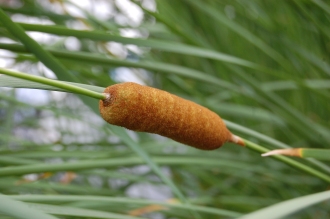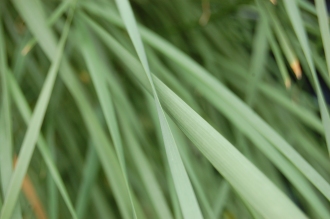Position: Full sun
Flowering period: Summer to early autumn
Soil: Wet, poorly drained (water depth of up to 30cm)
Eventual Height: 1m
Eventual Spread: 50cm
Hardiness: 4a, 4b, 5a, 5b, 6a, 6b, 7a, 7b, 8a, 8b, 9a
Family: Alismataceae
Alisma subcordatum is a deciduous, perennial marginal aquatic with a clump form habit. Its mid to dark green leaves are ovate to elliptic with sinuate margins, up to 15 cm long and 10cm broad. Its flowers have yellow stamen, three pale pink or white petals and are up to 1cm across. The flowers appear in panicles on an erect upright, branched stem above the leaves. Its fruit is an ovoid achene and up to 3mm long. Its roots are rhizomes.
Alisma subcordatum, commonly known as the American Water-plantain, Southern Water-plantain or Mad-dog Weed, is native to North America. In its native habitat it grows in shallow water at the margins of bodies of fresh water and ditches. Alisma subcordatum is synonymous with Alisma parviflora and Alisma plantago-aquatica var. parviflorum.
The etymological root of the binomial name Alisma is derived from the Celtic alis meaning ‘water’. Subcordatum is derived from the Latin sub meaning ‘below’ and cordata meaning ‘heart shaped’.
The landscape architect may find Alisma subcordatum useful as an aquatic plant for plating at pond and lake margins. It is also very useful for ditch planting as it tolerates fluctuating water levels, this also makes it ideal for use in SUDS (Sustainable Urban Drainage System) planting scheme.
Ecologically, Alisma subcordatum flowers are attractive to pollinating insects, including some species of flies, bees and beetles.
Alisma subcordatum prefers wet, poorly drained soils. It prefers a water planting depth of between 0cm to 30cm below water level. It tolerates most pH of soil.
Alisma subcordatum requires little maintenance. Large clumps may be divided in spring.











